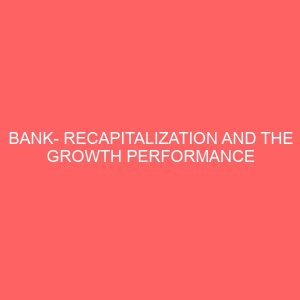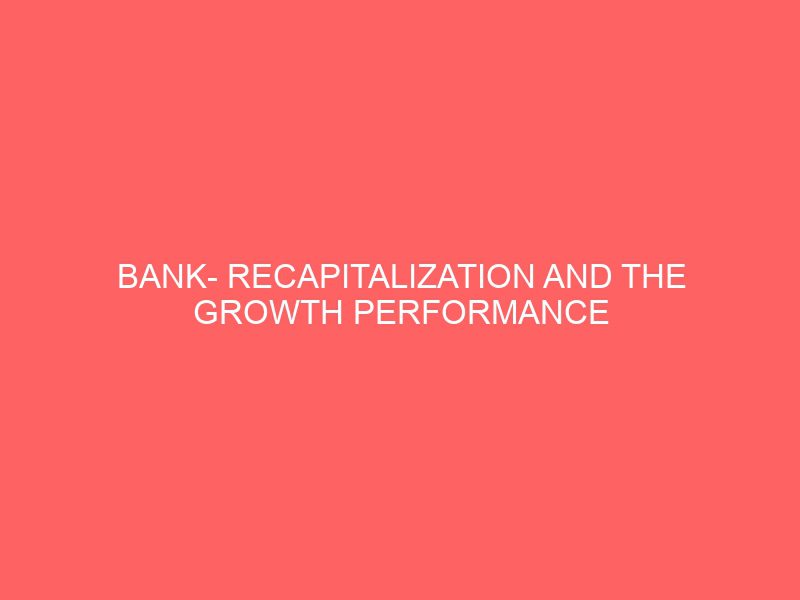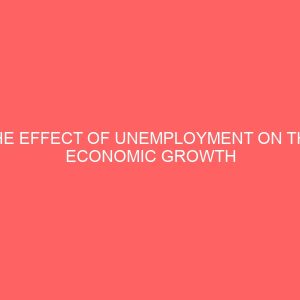Description
CHAPTER ONE
INTRODUCTION
1.1 BACKGROUND OF THE STUDY
The banking system in any economy plays the important role of promoting economic growth and development through the process of financial intermediation. Plays the vital role of financial mobilization and intermediation in an economy. In the work of Schumpeter 1911 he argued that financial services are paramount in promoting economic growth. In this view production requires credit to materialize, and one can only become an entrepreneur by previously becoming a debtor. what the entrepreneur first wants is credit. Before he requires any goods whatever, he requires purchasing power. He is the typical debtor in capitalist society. In this process, the banker is the key banking sector agent. Keynes 1930, in his A treatise on Money, also argued for the importance of the banking sector in economic growth. He suggested that bank credit is the pavement along which production travels, and the bankers if they knew their duty, would provide the transport facilities to just the extent that is required in order that the production powers of the community can be employed at their full capacity
TABLE OF CONTNENT
Title pagei
Approval pageii
Dedicationiii
Acknowledgementiv
Abstract v
Table of contentsvi
CHAPTER ONE: INTRODUCTION
Background of the study1
Statement of the problem6
Objectives of the study9
Statement of the Hypothesis10
Significance of the study10
Scope and limitations of the study11
CHAPTER TWO: LITERATURE REVIEW
2.1 Theoretical Literature 13
2.1.1 Roles of Banking Credit In Rural Sector Growth 17
2.2 Empirical Literature20
2.2.1 Banking Sector and Real Sector Performance in Nigeria 25
2.2.2 Rationale behind consolidation in Nigeria 28
2.2.3 Comparative Analysis 31
2.3 Limitations and Motivations for Further Study33
CHAPTER THREE: METHODOLOGY
3.1 Method of Analysis 35
3.2 Model Specification36
3.3 Estimation Procedure37
3.4 Model Justification38
3.5 Data Sources and Adjustment38
3.6 Econometric Software39
CHAPTER FOUR: PRESENTATION AND INTERPRETATION OF RESULTS
4.1 Presentation of Regression Results40
4.2 Interpretation of Results41
4.3 Evaluation of Result43
4.3.1 Evaluation based on Economic criteria 42
4.3.2 Evaluation based on Statistical criteria44
4.2.3 The F Test46
4.3.3 Econometric Criteria second order test47
CHAPTER FIVE: SUMMARY, RECOMMENDATIONS
AND CONCLUSION
5.1 Summary of findings53
5.2 Future Policy Option 54
5.3 Concluding Remarks58
REFERENCES
APPENDICES








Reviews
There are no reviews yet.